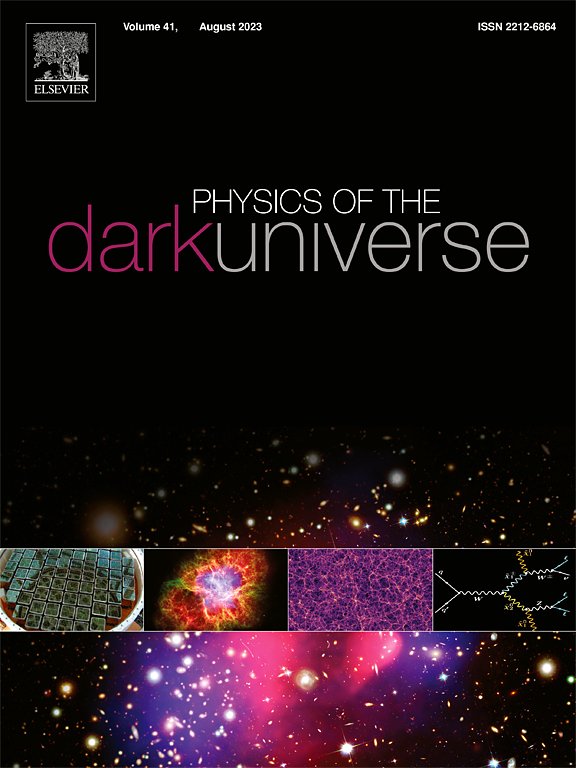Optical signatures of hairy black holes surrounded by plasma: Shadows and weak lensing
IF 6.4
2区 物理与天体物理
Q1 ASTRONOMY & ASTROPHYSICS
引用次数: 0
Abstract
The optical properties around the hairy black hole have been studied in the presence of a plasma medium. The obtained results have shown that the effect of the hairy black hole parameter’s , and on the deflection angle of light rays around the black hole is perceptible. With an increase in hairs and of black hole, there is a promotion in the radius of the photon sphere and the radius of the shadow of the central object. However, an increase in primary hair leads to a reduction in the photon sphere and shadow of the hairy black hole, and the effect of plasma on the deflection angle is the opposite. Here, we discuss different types of plasma distributions: uniform ; Singular Isothermal Sphere medium and nonuniform plasma with . Additionally, the total magnification of the image source due to the gravitational weak lensing has also been considered taking into account the influence of parameters , and related to hairy spacetime in the presence of plasma around the black hole.
被等离子体包围的毛茸茸黑洞的光学特征:阴影和弱透镜效应
在等离子体介质存在的情况下,研究了毛状黑洞周围的光学特性。所得结果表明,毛状黑洞参数a、lo和Q对黑洞周围光线偏转角的影响是可察觉的。随着黑洞毛数a和毛数lo的增加,光子球半径和中心物体阴影半径都有提升。然而,原毛Q的增加导致毛状黑洞的光子球和阴影的减小,而等离子体对偏转角的影响正好相反。这里,我们讨论了不同类型的等离子体分布:均匀ωe=const;ωe2=zo/r的奇异等温球介质和非均匀等离子体。此外,考虑到黑洞周围等离子体存在时与毛状时空相关的参数a、lo和Q的影响,还考虑了引力弱透镜引起的像源总放大。
本文章由计算机程序翻译,如有差异,请以英文原文为准。
求助全文
约1分钟内获得全文
求助全文
来源期刊

Physics of the Dark Universe
ASTRONOMY & ASTROPHYSICS-
CiteScore
9.60
自引率
7.30%
发文量
118
审稿时长
61 days
期刊介绍:
Physics of the Dark Universe is an innovative online-only journal that offers rapid publication of peer-reviewed, original research articles considered of high scientific impact.
The journal is focused on the understanding of Dark Matter, Dark Energy, Early Universe, gravitational waves and neutrinos, covering all theoretical, experimental and phenomenological aspects.
 求助内容:
求助内容: 应助结果提醒方式:
应助结果提醒方式:


